Taro: What It Is And How To Eat It
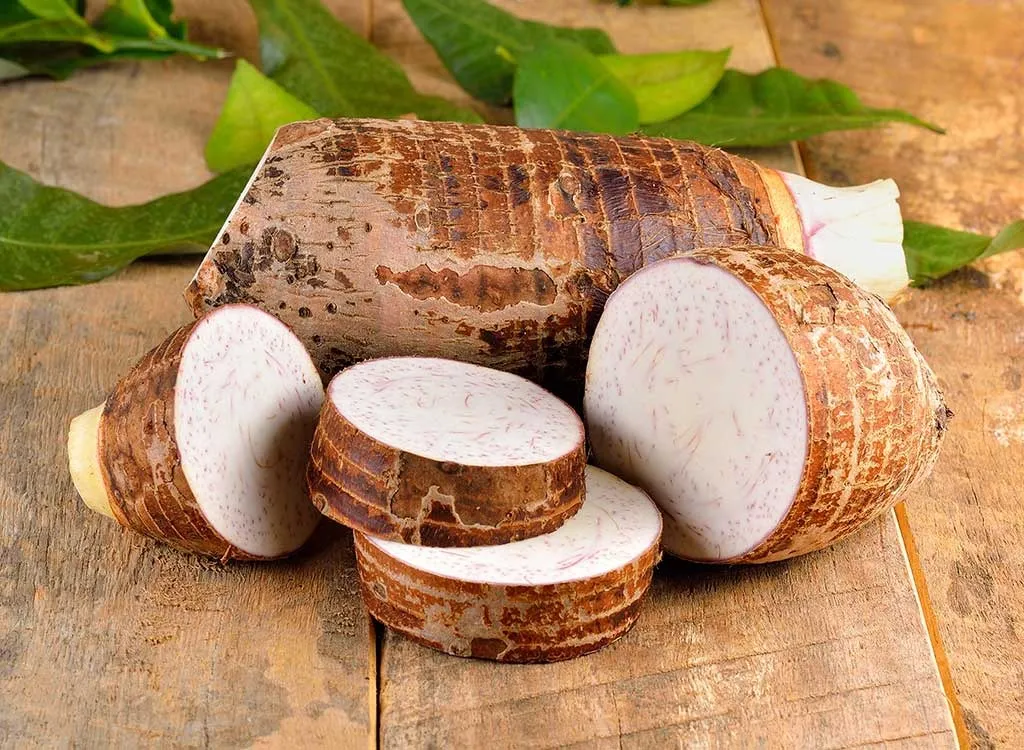
From plums to eggplants to purple carrots, purple foods are always a nice surprise. But if you’re not familiar with something, it might also make you wonder what exactly you’re looking at. Enter taro, an ancient food that feels like a brand-new option that’s popping up everywhere.
So, what does taro taste like? Taro is slightly sweet and nutty in flavor, and it’s the root of the taro plant, which grows in tropical and semitropical climates all over the world. If you’re wondering how to grow taro, and you don’t live in such a climate, you can attempt to grow it in a greenhouse. Taro has actually been a food staple in many Southeast Asian, South Indian, African, and Pacific Island cultures for centuries. Registered dietitian and spokesperson for the Academy of Nutrition and Dietetics, Alissa Rumsey describes taro as “a starchy vegetable similar to a potato but with twice the fiber.” Sounds good to us! She also says that the root is “an excellent source of vitamin B-6, as well as a good source of potassium, magnesium, and vitamin C.” Taro also contains other B vitamins, including b1, b2, b3, b5, and folate, all of which are involved in energy, metabolism, and red blood cell production.
“Taro also contains minerals like copper and zinc,” adds registered dietitian Isabel Smith. “These are key for thyroid health. Meanwhile, manganese is part of an antioxidant pathway in the body, and there’s also potassium for your heart health.” With all these promising nutrients, we bet you’re wondering how you should consume the lavender speckled root. We’ve got your back with a few creative ways to eat taro.
8 ways to eat taro
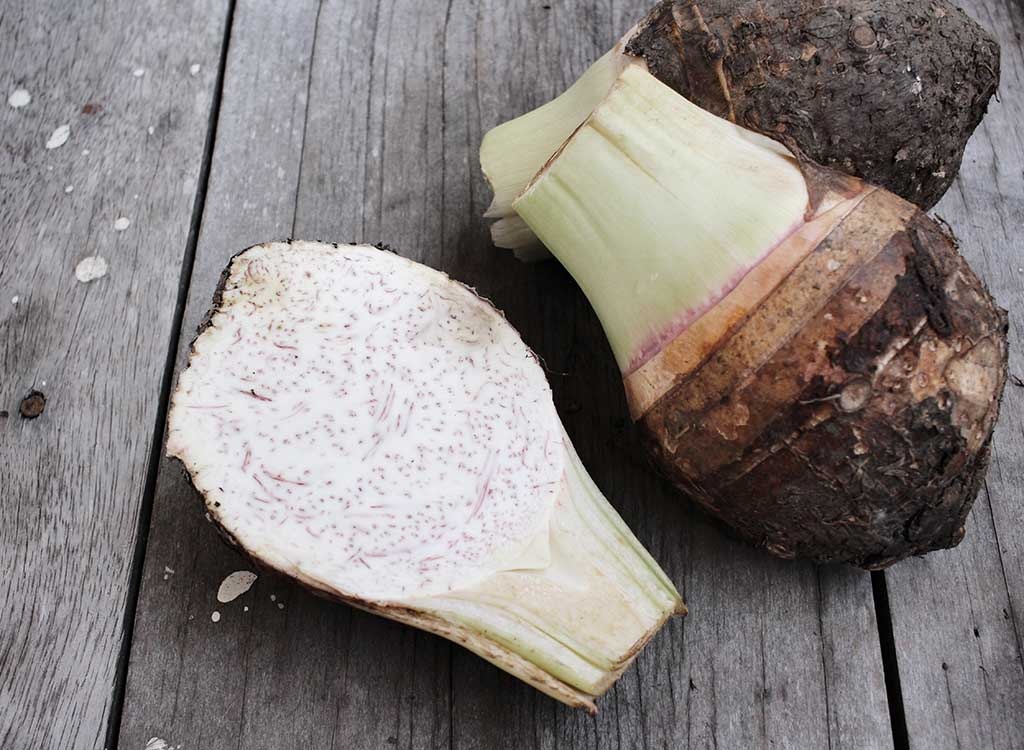
Taro is basically inedible when raw—it can reportedly cause irritation and itchiness. Yikes! However, when properly cooked, it can be eaten in a number of ways, and it’s actually very versatile. In addition to being eaten in all the ways that a potato might be, taro’s mild and slightly sweet flavor allows it to seamlessly transform into a variety of dishes, as you’ll learn here on different ways to cook taro. If you’re wondering how to cook taro (also known as taro root), it’s actually quite simple—you just boil it until tender.
Taro fries
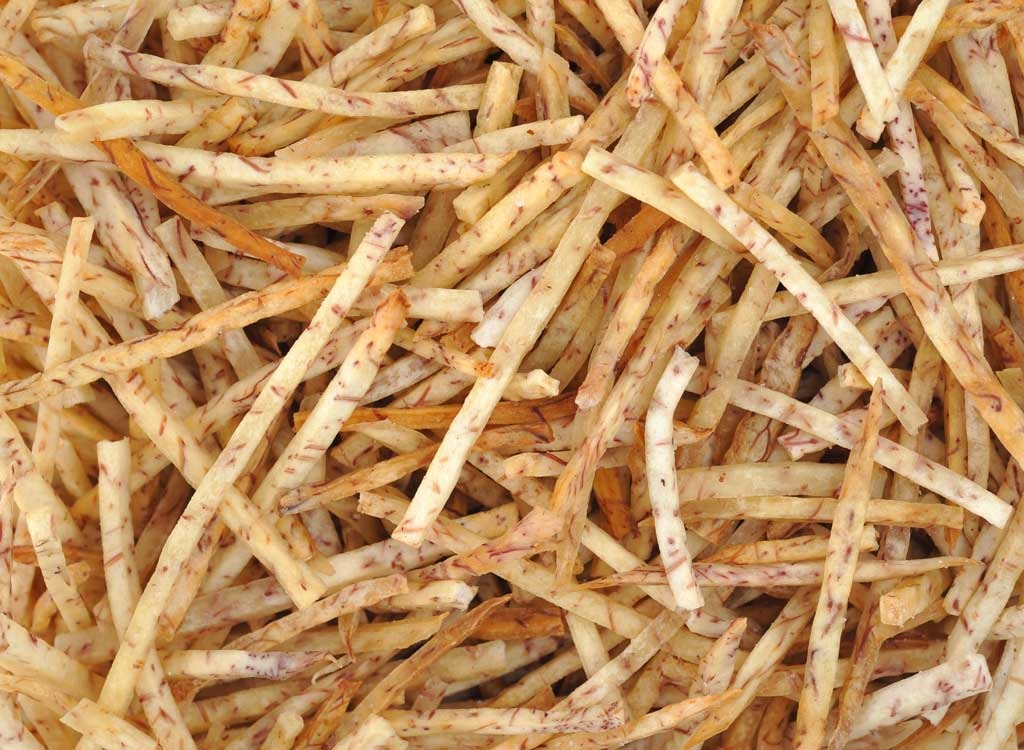
We didn’t think that fries could get any better—until we saw these purple-speckled shoestrings! Impress your dinner guests by slicing the root into fries and popping them in the oven with a touch of your favorite oil for a fiber-packed and aesthetically-pleasing side dish! Pro tip: These fries pair great with any sriracha-spiked sauce.
Taro bubble tea
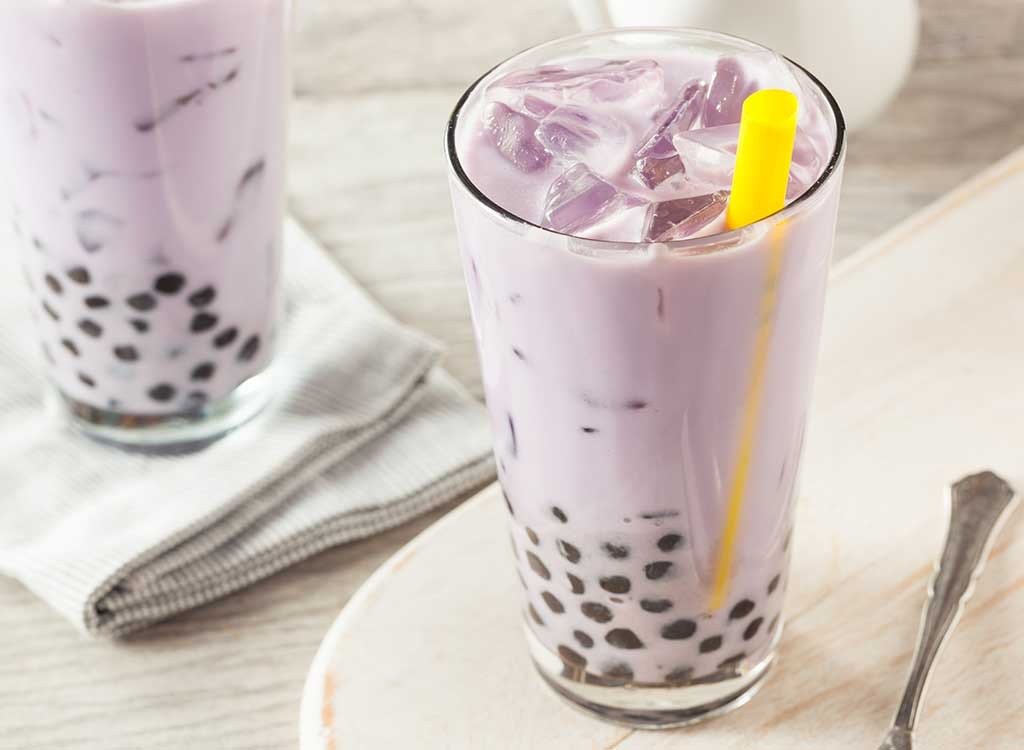
Taro’s nutty flavor with a hint of sweetness has made it a hit among bubble tea lovers. The once-in-awhile treat is made with taro root powder and blended with milk before being topped off with the famous tapioca pearls. Not only does it taste great, but it’s the prettiest of all the options too. (Just look at that light violet hue!) That chai bubble tea you like to slurp on will have nothing on this taro milk tea!
Curried taro

In Southern India—where taro is very common—the root is often curried, giving the root an entirely different spicy flair. Next time you visit an Indian restaurant, keep an eye out for “Arvi Curry” on the menu!
Taro chips
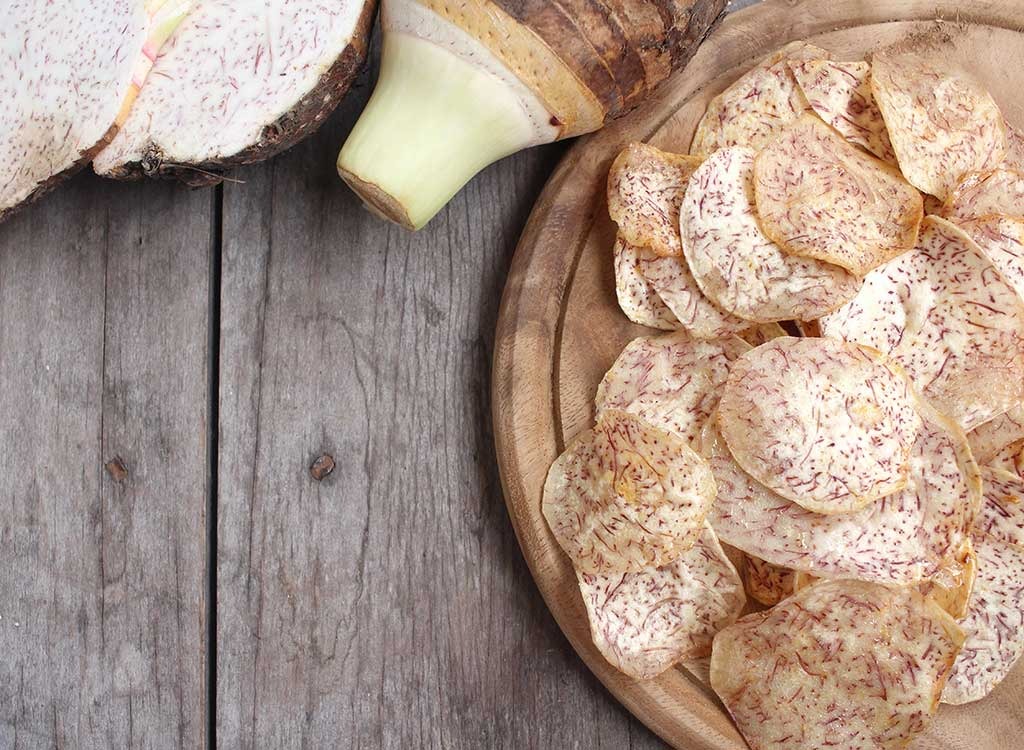
Sliced thinly and then baked, taro also makes a great alternative to your average potato chips. With more fiber and far fewer calories than whatever you’d get in a bag, taro chips are a great choice for a snack that the whole family will love. The brand Terra has already caught on and have their own variety of taro chips.
Poi (mashed taro root)
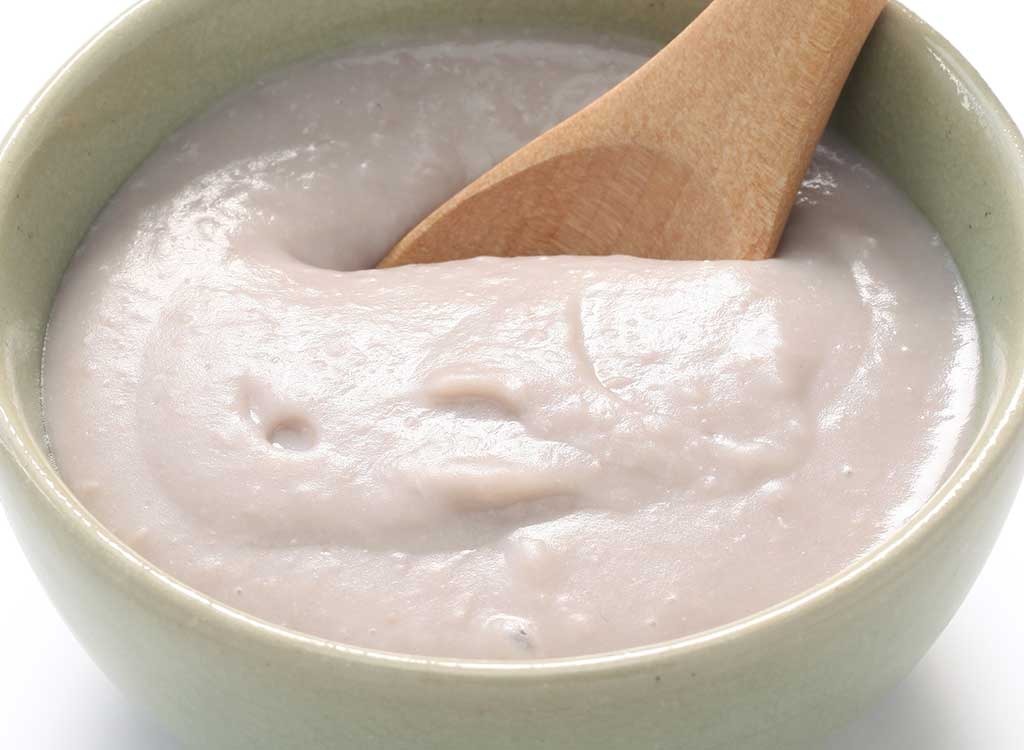
This traditional Hawaiian dish is as simple as eating taro gets—simply peel and steam the root and then mash it, gradually adding water until it’s smooth and sticky. “It’s a great alternative to potatoes, sweet potatoes, and yams, and lends a pretty purple hue to your plate,” says Rumsey.
Taro ice cream or frozen yogurt
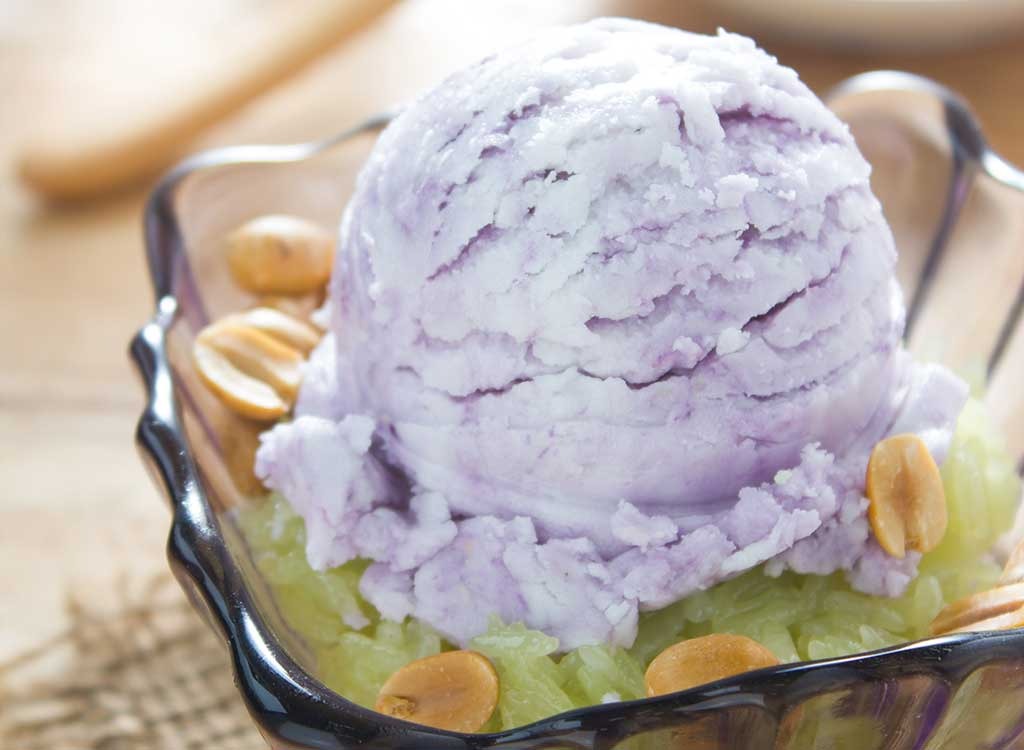
Although it might be strange to think of a potato-like vegetable as an ice cream flavor, we promise it actually tastes pretty good! The milky, sweet, and nutty combination is a fun and different alternative to your average vanilla scoop. The flavor is growing in popularity, popping up at froyo and ice cream shops across the country.
Using taro in baked goods
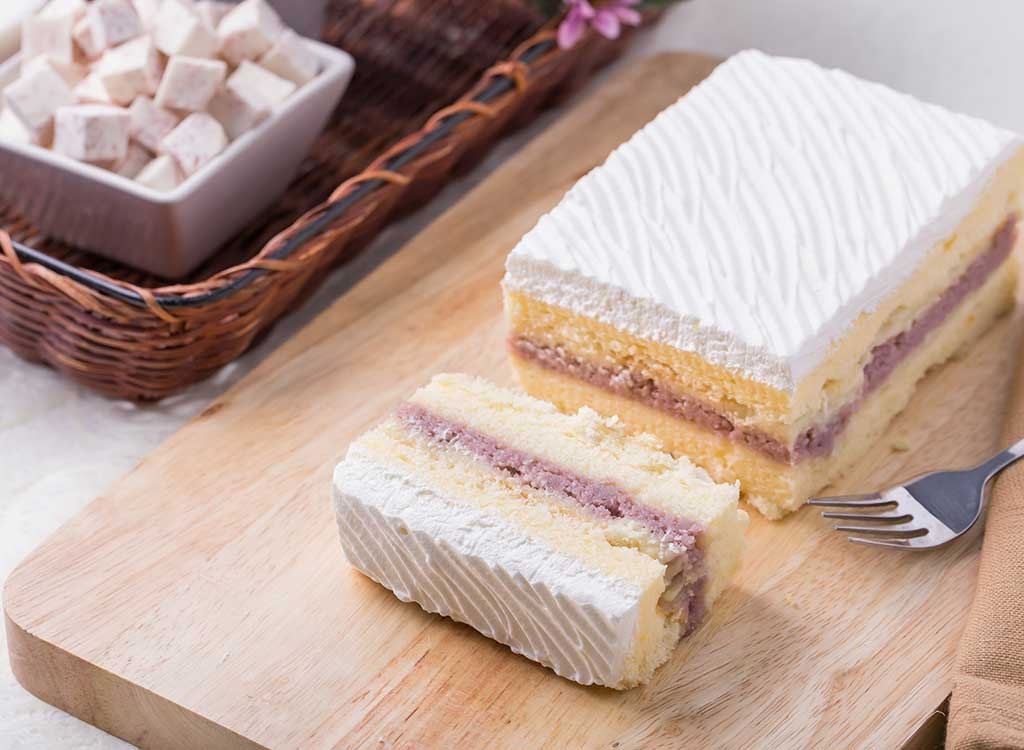
The same taro powder used to make bubble tea can actually be bought and used to flavor–and add color to–a wide range of baked goods. You can also use taro flour–which is gluten-free!–instead of regular flour. And we can’t think of anything kids would love more than a big slice of purple cake!
Taro pancakes
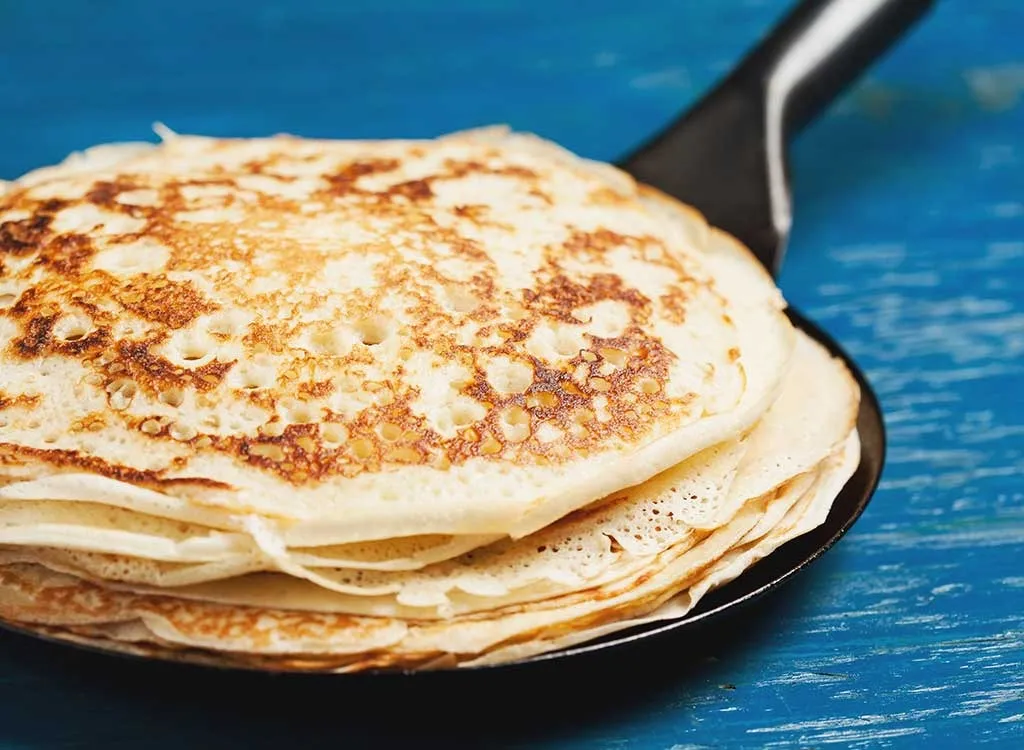
Poi can be easily incorporated into pancake batter to create fluffy hot cakes. You can also find taro in the form of flour or pancake mix at specialty stores for a more convenient breakfast option.